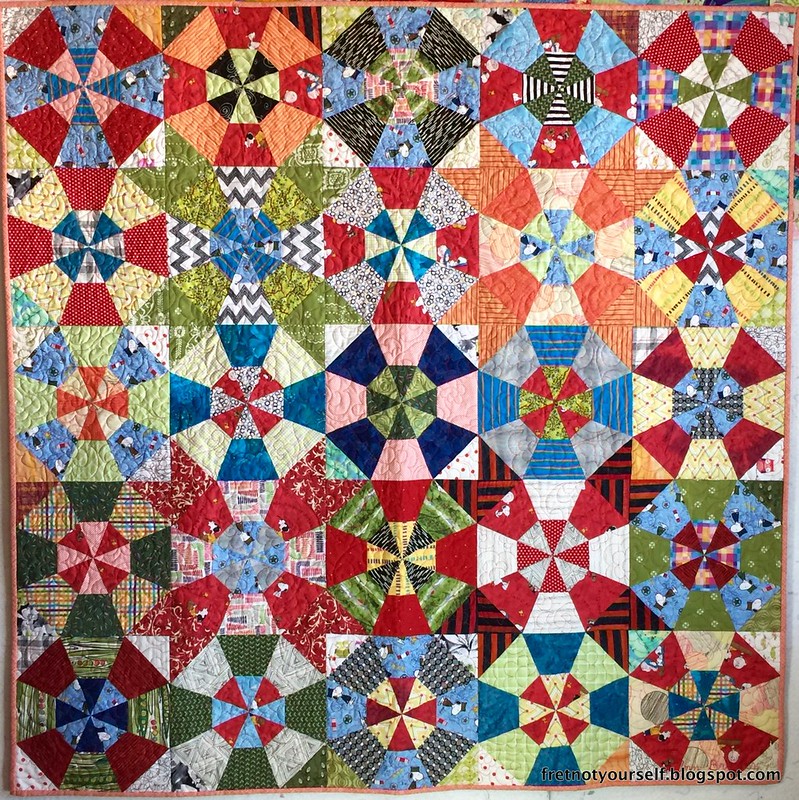1. Ruler cut; matched edges.
This is traditional quilting. Do you think it isn't improv? Think again. Many well-respected improv quilters use this technique in some part of their work. (Admittedly, most frequently to square up a freehand block.) Gwen Marston and Sujata Shah come to mind.
- Cut pieces with a ruler
- Match the cut edges
- Sew a quarter-inch seam
Offhand, this may be what most people call improv.
- Cut pieces without a ruler
- Match the cut edges no matter how they wiggle
- Sew a quarter-inch seam
This is a possibility but I don't think I've ever seen it done. The seams can move like matched edges of free cut strips.
- Cut pieces with a ruler
- Do not match the cut edges
- Sew at least a quarter-inch seam
What is this? Just because it's cut a certain way, doesn't mean that's what is wanted. This method smooths out the irregularities. A seam can appear to have been ruler cut if done carefully.
- Cut pieces without a ruler
- Arrange the pieces to smooth out wiggles on the edges
- Sew at least a quarter-inch seam; it may be wider in some areas
 |
| Back views. Left to right: 1) Ruler cut, matched edges. 2) Free cut, matched edges. 3) Ruler cut, unmatched edges. 4) Free cut, unmatched edges. |
 |
| Front views. Left to right: 1) Ruler cut, matched edges. 2) Free cut, matched edges. 3) Ruler cut, unmatched edges. 4) Free cut, unmatched edges. |
Improv is about choice. Frankly quilting is (or should be) about choice. Cutting and sewing decisions affect the appearance of your quilt. I believe we should follow our own inclinations rather than rules imposed by others. It's one thing to read and discuss; you are still responsible for your own choices. Blindly following dictates from others lessens our confidence and creativity.
Most of us quilt for pleasure. Are you having enough fun? This Subaru commercial expresses the joy we should feel when we quilt. (Google 'Subaru painting easel' to find it on your own.) Don't you wish we all experienced as much drive to create, excitement during the process, and contentment with our results as this man enjoys?
InLinkz removed because the site was hacked.
Enjoy the day,
Ann
Most of us quilt for pleasure. Are you having enough fun? This Subaru commercial expresses the joy we should feel when we quilt. (Google 'Subaru painting easel' to find it on your own.) Don't you wish we all experienced as much drive to create, excitement during the process, and contentment with our results as this man enjoys?
InLinkz removed because the site was hacked.
Enjoy the day,
Ann














































